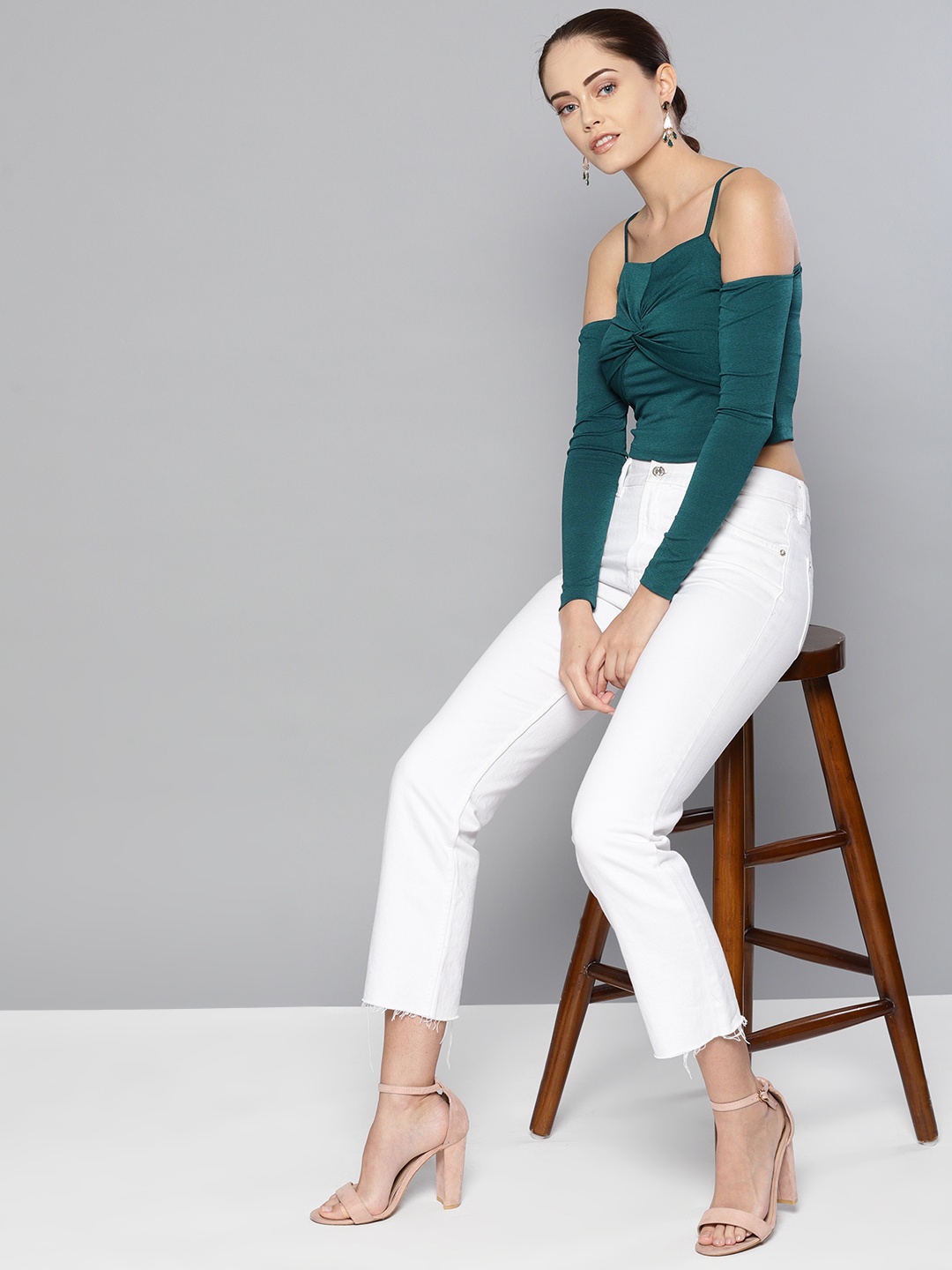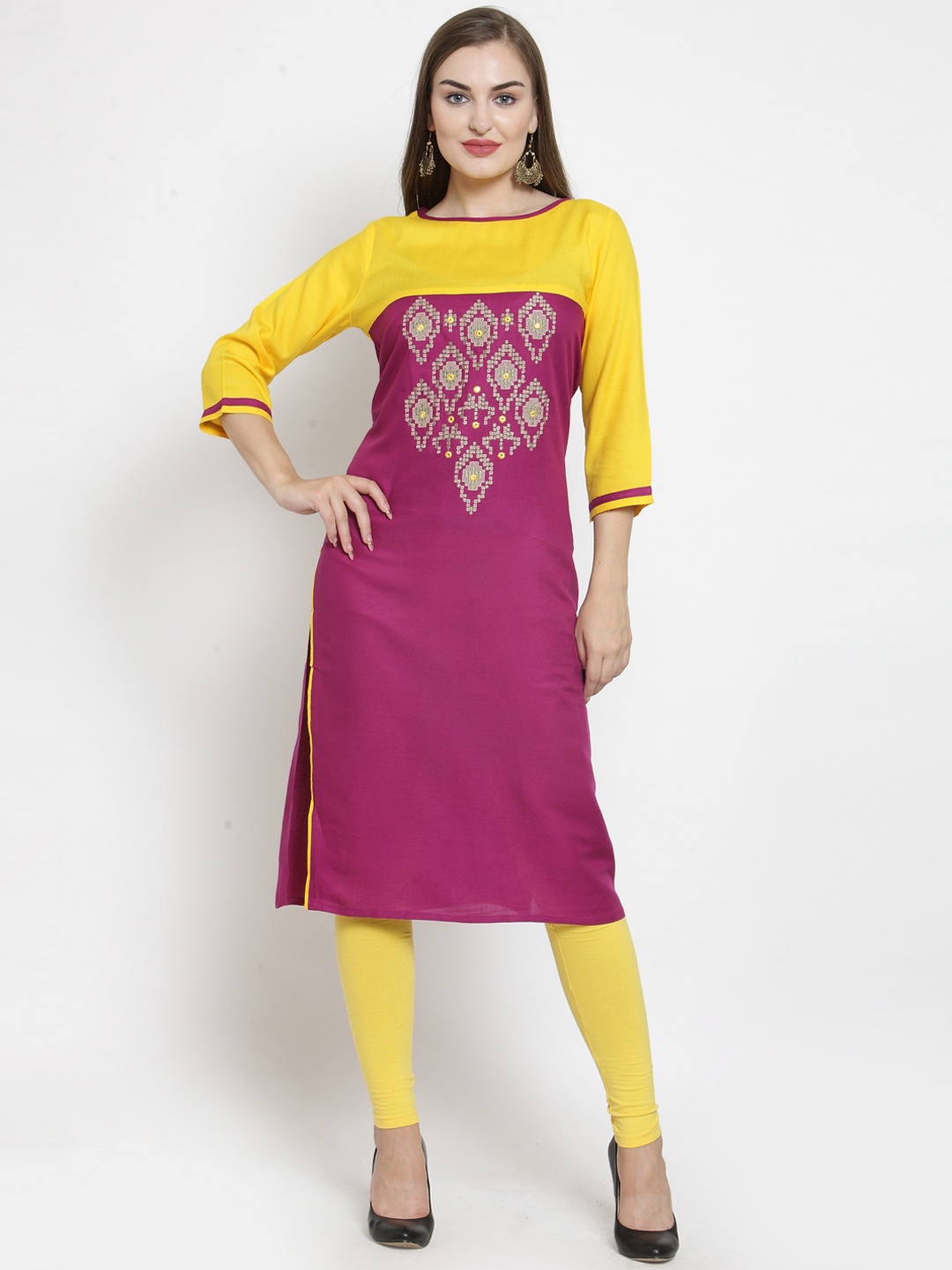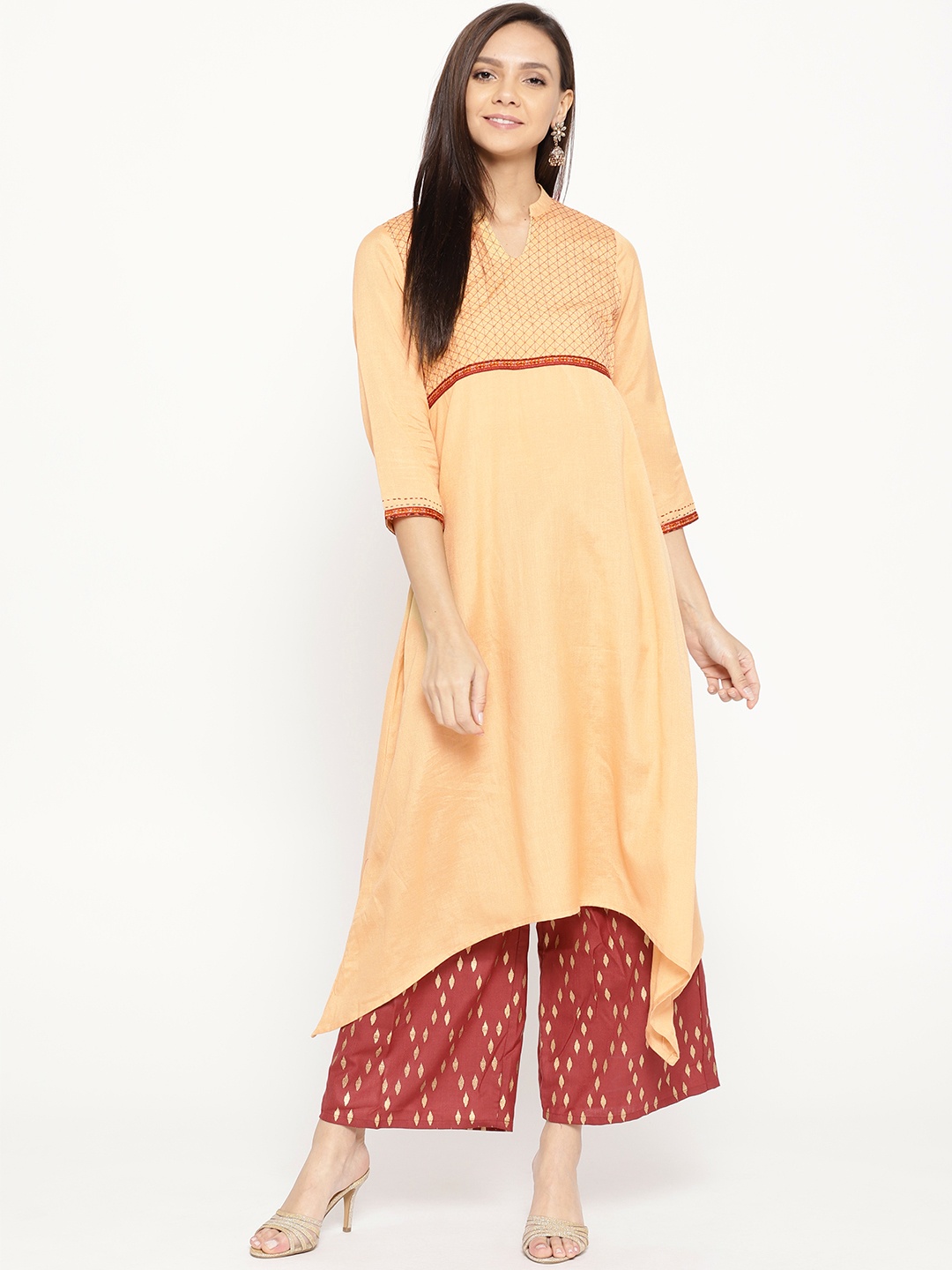How To Choose the Right Dhoti for Men: Fabric, Fit and Draping Style
A dhoti carries a charm that blends tradition with everyday comfort. This guide breaks down fabrics, fits and draping styles so that every dhoti feels perfect, whether it’s for a temple visit, a wedding or a relaxed day with family.

Guide to Choosing the Perfect Dhoti for Men: Fabrics, Fits, Colours, and Draping Styles Explained.
A dhoti has a fascinating way of connecting daily life with cultural memory. It brings to mind early mornings, fragrant incense, temple bells, loud cousins during festivals, and elders whose carefully tucked pleats never seem to loosen. Yet the modern wardrobe often pushes it behind shirts and denim, waiting to be rediscovered.
When someone finally decides to bring a dhoti back into rotation, the first question usually pops up before the cotton even touches the cart: Which one? With an ocean of fabrics, drapes, borders and fits, choosing the right dhoti can feel daunting. But the journey becomes easier, and even enjoyable, when broken into simple, relatable steps.
This guide walks10 key factors that help pick a comfortable, stylish and beautifully draped dhoti. Every section carries practical tips, familiar scenarios and thoughtful details to help any man choose the perfect dhoti for daily wear or special occasions. So, check out this guide to choosing the perfect dhoti for men, revealing top tips about fabrics, fits, colours, and draping styles.

How To Choose the Right Dhoti for Men: Fabric, Fit, and Draping Style; Photo Credit: Pexels
Key Factors To Consider When Choosing The Perfect Dhoti
1. Understanding the Essence of a Dhoti
A dhoti is more than cloth; it's a symbol of timeless style. Even in a fast-moving world of quick fashion, a dhoti keeps its steady elegance. Many picture elders expertly folding and tucking it with a rhythm that seems practised over decades. That memory creates a certain affection for the garment. Today, younger generations mix its classic charm with modern tastes, wearing it during festivals, yoga sessions or even paired with contemporary jackets.
To choose the right dhoti, it helps to know its purpose. Some prefer a dhoti for comfort on warm days, while others reach for it during puja or celebrations. A few enjoy it as a fashion statement, sharp pleats, bold borders and rich silk that turns heads at weddings. Understanding its role in a personal wardrobe gives clarity. Whether for relaxed mornings, temple visits or bright ceremonies, the dhoti adapts beautifully. That adaptability makes it special, and selecting one becomes easier when the wearer knows the mood and moment it must suit.
2. Choosing the Best Fabric for Comfort
Fabric plays the biggest role in how a dhoti feels. Cotton remains a front-runner because it stays breathable and soft through hours of wear. On hot afternoons, a cotton dhoti feels airy enough to keep the body relaxed. The texture also absorbs moisture, making everyday movement comfortable. When choosing cotton, look for varieties like mulmul or combed cotton , both offer a gentle touch on the skin.
Silk dhotis create a completely different experience. They look regal, carry a natural sheen and feel luxurious at festive occasions. A silk dhoti paired with a crisp angavastram can transform any celebration look. For those who want the richness of silk without the weight, art silk offers a lighter, more pocket-friendly option, often under ₹1500.
Blended fabrics also exist, mixing comfort with durability. They work well for long events or for those who move around a lot. When selecting fabric, consider climate, the event's length and personal comfort. A dhoti must feel like an extension of the body, not a struggle to manage, so the right fabric sets the tone for a pleasant experience.
Also Read: How To Wear Dhoti Pants Without Making Them Look Costume-Like: 10 Stylish Ways
3. Getting the Perfect Fit
A well-fitted dhoti makes every movement look effortless. Many assume dhotis come in a universal size, yet length and width matter more than expected. Taller men benefit from longer dhotis, usually around 4.5 to 5 metres, while shorter heights can pick lengths under 4 metres. Choosing the right size prevents awkward adjustments during the day.
The width also influences comfort. A broader dhoti allows clean pleats and a dignified look, especially during ceremonies. Meanwhile, a narrower dhoti works well for casual moments, morning rituals or relaxed lounging at home. Some dhotis come pre-stitched, offering ready-made pleats and velcro support. They help beginners who worry about tucking mistakes.
Before buying, picture the activity. A dhoti for a wedding should offer enough room for graceful movement, while one for a short event can stay lighter. With the right fit, confidence grows, and every step feels smooth. Fit transforms a simple piece of fabric into a garment that enhances posture, comfort and overall appearance.
4. Colour Choices that Suit Every Occasion
Choosing the right colour sets the tone for the entire outfit. The classic white or off-white dhoti continues to hold its place as the most versatile choice. It pairs well with vibrant kurtas, subtle shirts and silk angavastrams. The purity of white brings a calm elegance suited for temples, family gatherings and morning rituals.
For weddings or festivals, richer tones come into play. Cream, shades of gold, soft beige or light yellow bring warmth that photographs beautifully during celebrations. These colours blend well with bright sherwanis or richly embroidered kurtas. Younger men often experiment with bolder hues, maroon, bottle green or navy, especially in silk varieties.
When picking colours, consider the time of day and the theme of the event. Morning functions favour lighter shades, while evening celebrations allow deeper tones. Even the border plays a part; gold borders elevate the dhoti for grand moments, while simple zari or coloured trims keep it casual. A colour chosen with thought uplifts confidence and enhances the moment.
5. Exploring Borders and Patterns
Borders carry personality. A simple gold zari line feels elegant, while a wider temple-inspired border adds drama. Many gravitate towards traditional patterns featuring motifs like peacocks, mango designs or geometric lines. These motifs bring charm and reflect cultural roots while staying stylish.
For everyday comfort wear, thin borders make movement easy and avoid drawing too much attention. During festivals, broader borders feel festive and strike a balance between tradition and flair. Silk dhotis often showcase more intricate patterns and lustrous zari, creating a majestic look that stands out in wedding photos.
Some men choose borders based on their kurta or angavastram. Matching the border with the shade of the upper garment creates cohesion without appearing too coordinated. With so many styles available, the border becomes a chance to express personal taste, whether subtle, bold or somewhere in between.

How To Choose the Right Dhoti for Men: Fabric, Fit and Draping Style; Photo Credit: Pexels
6. Draping Styles Across Regions
Different regions drape dhotis in their own unique ways, each with a charm of its own. The classic double-pleated style remains common at ceremonies and is easy for most men to handle. It offers a neat appearance and stays secure through long events. A single-pleat style suits everyday wear, providing a relaxed look with minimal fuss.
The veshti drape has a more traditional flavour, falling straight without heavy pleating. This style allows free movement, making it ideal for temple visits or cultural functions. Another popular style is the panchakacham drape, used often during rituals. It involves tucking the fabric between the legs, creating a more structured look.
The choice of drape depends on comfort, familiarity and occasion. Anyone new to dhotis can start with simple drapes and explore more intricate styles with practice. A well-chosen drape elevates the entire outfit, bringing grace and cultural richness into every step.
7. Seasonal Choices for Maximum Comfort
Choosing a dhoti that suits the season makes a world of difference. Summers call for breathable fabrics like mulmul or lightweight cotton. These fabrics feel cool even under the blazing sun, especially during outdoor gatherings or temple queues. Light colours reflect heat, adding extra comfort. A summer-ready dhoti keeps the body fresh even on humid days.
Winters allow a bit more experimentation. Thicker cottons, blended fabrics or even silk dhotis offer warmth without compromising style. Darker colours, such as maroon or deep beige, suit the winter mood and pair beautifully with layered kurtas or shawls. Evening functions during the cooler months feel more enjoyable in a dhoti that offers warmth and structure.
Monsoon seasons demand quick-dry fabrics. Blends with polyester or lighter silk alternatives help avoid damp discomfort. Choosing season-appropriate dhotis ensures the garment remains a joy to wear rather than a struggle, no matter the weather.
8. Matching Dhoti with Kurtas and Accessories
Pairing a dhoti with the right kurta turns it into a complete outfit. A crisp white dhoti suits almost any coloured kurta, making it a go-to for functions. Short kurtas create a youthful look, while longer ones bring a regal charm. Silk kurtas with zari work pair beautifully with rich silk dhotis during weddings.
Accessories add personality. A classic angavastram draped over the shoulder completes a ceremonial look. Sandals or kolhapuris maintain the traditional vibe while offering comfort. Some men enjoy adding bead necklaces or simple bracelets for a touch of modern flair.
Colour coordination matters too. A gold-bordered dhoti pairs well with warm-toned kurtas, while coloured borders match best with contrast hues. The goal is harmony, nothing too flashy or too plain. With the right pairing, the entire look feels thoughtfully put-together and photo-ready.
9. Everyday vs. Occasion-Wear Dhotis
Not every dhoti belongs to grand occasions. Everyday dhotis focus on comfort, softness and ease. Cotton dhotis in simple shades work well at home, for morning routines or calm temple visits. These dhotis stay durable even after frequent washes and rarely go beyond ₹400–₹800.
Occasion-wear dhotis, on the other hand, emphasise elegance. Silk, art silk or richly bordered cotton dhotis shine during ceremonies. They often come with broader borders, intricate zari patterns and premium finishes. Their price ranges from ₹1200 to ₹5000 depending on craftsmanship.
Choosing the right dhoti for the right purpose prevents unnecessary wear and tear. A wardrobe with at least one everyday dhoti and one ceremonial dhoti ensures readiness for any moment, from peaceful mornings to grand celebrations.
10. Care and Maintenance for Longevity
A well-maintained dhoti lasts years and stays fresh through countless wears. Cotton dhotis appreciate gentle washing. Mild detergents keep the fabric soft, while drying in shade prevents colour changes. Folding them neatly prevents wrinkles, making them easy to use at short notice.
Silk dhotis need more care. Dry cleaning keeps their sheen intact. Store them wrapped in soft muslin to protect the zari from moisture. Avoid hanging silk dhotis for too long, as it may distort the shape. For dhotis with heavy zari or embroidery, occasional airing prevents mustiness.
Proper care doesn't just extend lifespan; it preserves the beauty and emotional value of the dhoti. Each dhoti carries memories, weddings, festivals, rituals, and caring for them keeps those moments alive.
Products Related To This Article
1. Vaishnam Jari Cotton White Solid Men Lungi Solid Men Dhoti
2. Sawariya Clothing Mens Kesari Colour Panjakejam
3. Prithvi Santali Traditional Panchi Dhoti Self Design Men Dhoti
4. GREEN TEE men color dhoti Solid Men Dhoti
5. Sawariya Clothing Solid Men Dhoti
Choosing the right dhoti blends comfort, culture and personal style. With the right fabric, fit, drape and detailing, a dhoti becomes more than attire, it becomes a reflection of tradition and confidence. Whether for a calm morning, a festive celebration or an elegant wedding, the perfect dhoti brings charm to every occasion. With thoughtful choices and simple care, it stays ready for every meaningful moment, creating a timeless connection between the wearer and the heritage it represents.
(Disclaimer: This article may include references to or features of products and services made available through affiliate marketing campaigns. NDTV Convergence Limited (“NDTV”) strives to maintain editorial independence while participating in such campaigns. NDTV does not assume responsibility for the performance or claims of any featured products or services.)
























